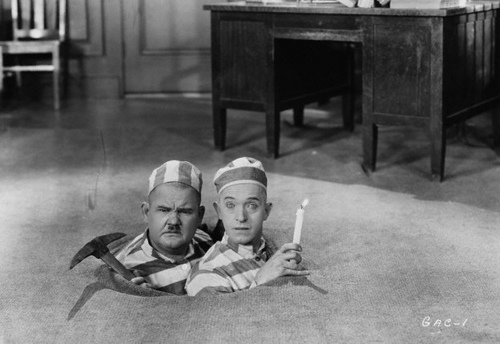
A pretty full Sunday at Hippfest — starting with a Laurel & Hardy double-bill — THE SECOND HUNDRED YEARS and THE FINISHING TOUCH — then QUEEN OF SPORTS, then THE NORTULL GANG and then THE WIND.
It was interesting to look at the early L&H and see how nearly-fully-formed the act was right from the off — Stan shaved his head to play a convict and his hair grew back all tufty and this became a trademark. At one point, Ollie blows a raspberry and gets Stan in trouble. In future, this would be rearranged so that Ollie is the main victim of Stan’s stupidity, and is craven before authority.
At the end of the double bill I noticed that my ribs were aching. So it was a good work-out, a way to burn off all that ice-cream I’d eaten in Bo’ness at the marvelous McMoo’s ice cream parlour.
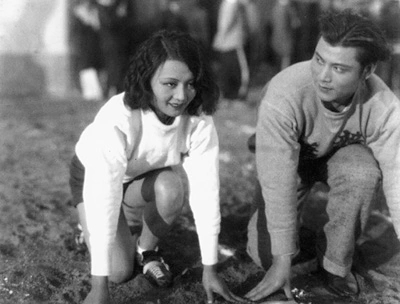
I’m not a huge fan of the Chinese silents I’ve seen — early talkies suit me better. But I decided to give QUEEN OF SPORTS (1934) a try. LOTS of nice camera movement in this one, tracking aslant into the action, in something like a Michael Curtiz manner, plus lots of elevator rises. I seem to recall director Yu Sun doing similar moves in his DAYBREAK, with maybe a Borzage influence.
I tend to get distracted by the naivety of the Chinese films, which is just a different form of the naivety found in American and European silents. But it’s a form which usually comes with a chunk of nationalist propaganda, and the same happened here, but not till the end. I don’t care for nationalism and I hate sports so this movie had two strikes against it as far as I was concerned.
Doing away with the underdog story that animates COLLEGE and THE FRESHMAN, QOS deals with celebrity sprinter Li Ying (Li-Li Li) who comes to Shanghai from the country and is really really good at running. So they have to come up with a couple more sources of tension, but they don’t develop any of these consistently. There’s a potential romance with Li’s hunky coach, and a school figure with a pencil moustache and neck to match. Then there’s a brief interlude where fame goes to Li’s head and she neglects her training to go to a football match and a youth club (scandalous stuff). But that only takes up ten minutes.
Then there are the mean girls who plot to defeat Li, but their plot just involves trying to win against her, which I thought was the point of the sport anyway. And one of them has a weak heart (new kinds of unconvincing acting are tried out to portray this — a “cough” that causes the actor’s hand to flutter from chest to mouth, plus a lot of writhing about).
I enjoyed seeing 1930s Shanghai, and seeing 1920s college movie fashions ported over from Hollywood — pennants! a ukulele! a tiny silver megaphone! And the training montages with wipes galore, something you didn’t really see in American silents, so this is a combination of silent movie and early talkie visual storytelling. And all those camera movies were lovely.
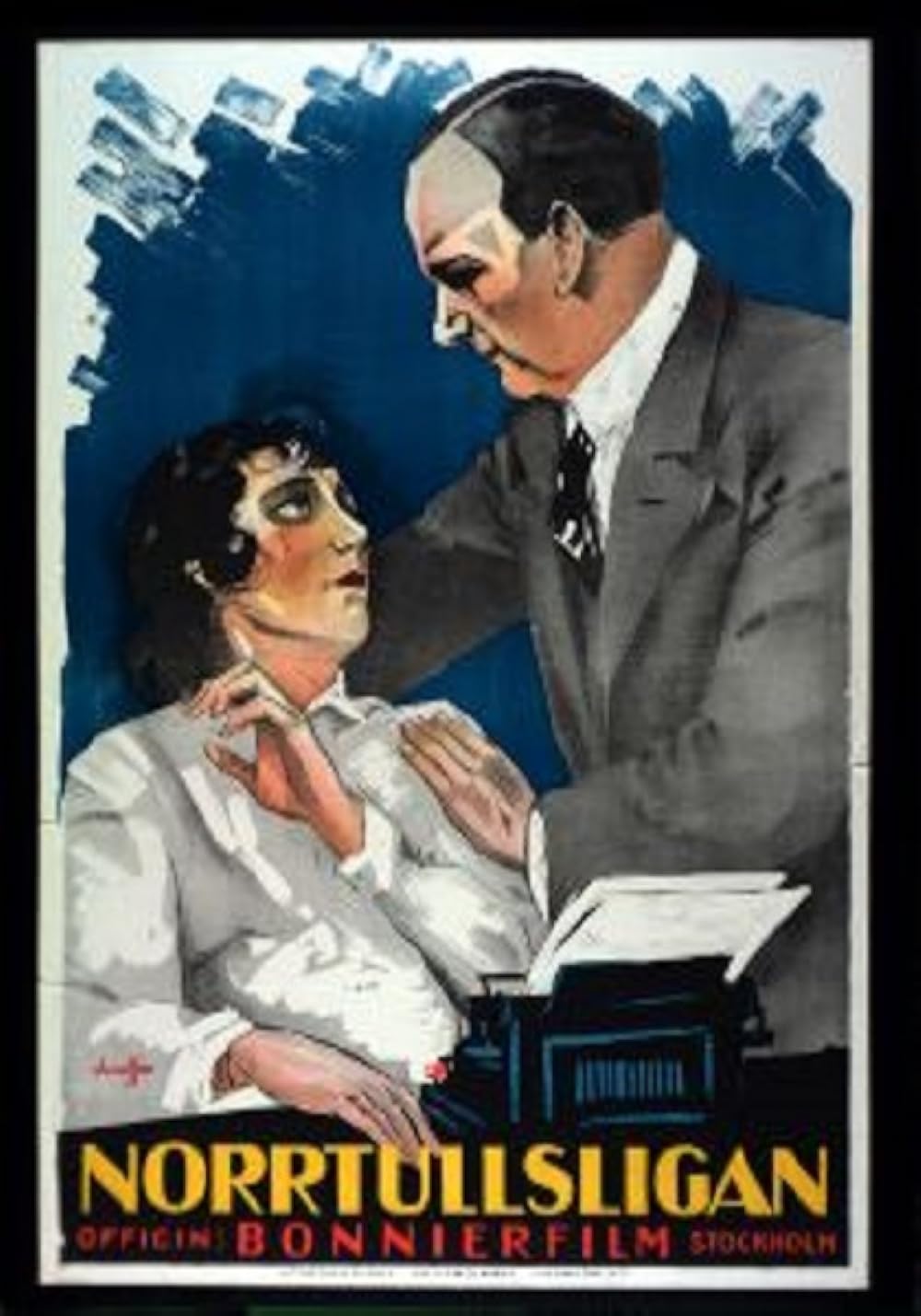
THE NORTULL GANG (1923) was odd in totally different ways. Four working girls share an apartment in Stockholm (and again, nice to see the city) — their lives and loves and so on. This was based on a novel, and the intertitles went for quite a novelistic approach: events were set up before they happened, but in a mysterious and wry way, so it wasn’t like those 1910 movies where the titles act as spoilers, here they’re TEASERS. This was done so frequently, though, that it all felt like the set-up for a story that was just about to kick off. I was waiting for the story to begin, then realised it had, sort of, and then it ended really nicely. An experiment in narrative — the film has a real tone of voice, ironic, self-deprecating, feminist.
And Nils Aster turned up for the second time this weekend, playing a different kind of louse with a different moustache (he plays a jealous guy in OUR DANCING DAUGHTERS).

Per Lindberg directed sensitively (his other films sound interesting too, mostly talkies) — I spent a lot of time just enjoying the streets, and the kind of stuff people had in their houses and offices. (Incidentally, in a short piece about Dickens’ London, called I think DICKENS’ LONDON, we saw an ad on a bus for something called “Iron Jelloids.” If you can score me some Iron Jellloids, I would be appreciative. In JUST AROUND THE CORNER a cigar store was selling “Egyptian Deities.” I don’t smoke but if a free cigar is offered I take it. This has only happened to me once so the risk of addiction seems slight.)
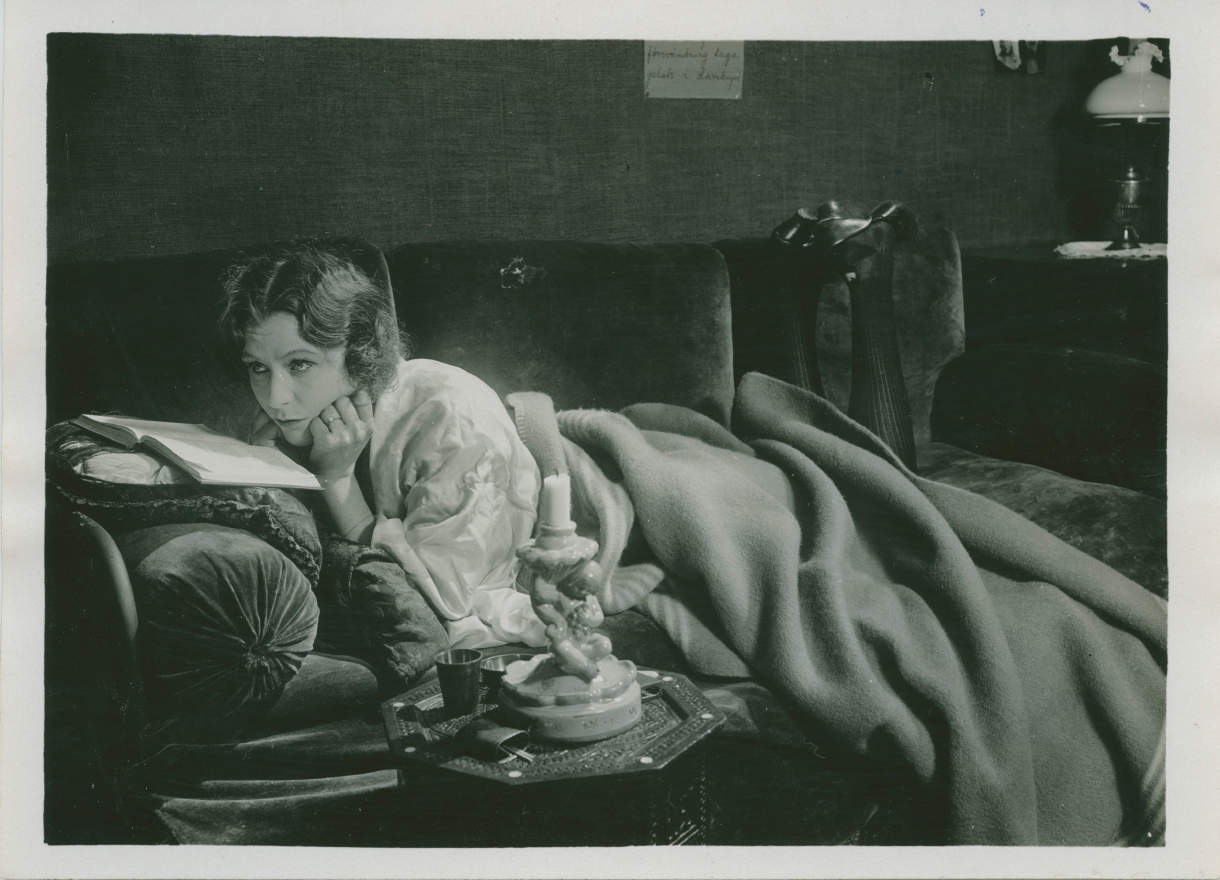
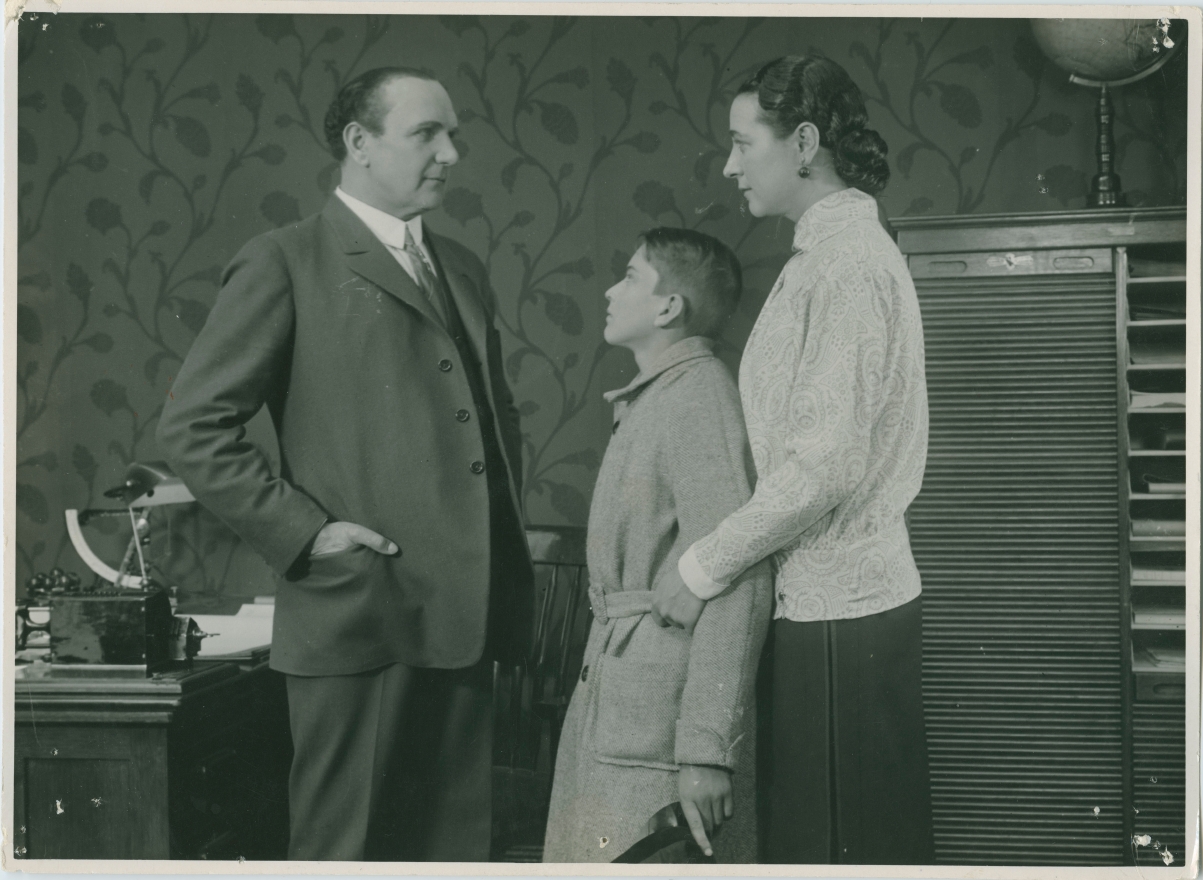
As for THE WIND… that might merit a whole series of posts…











